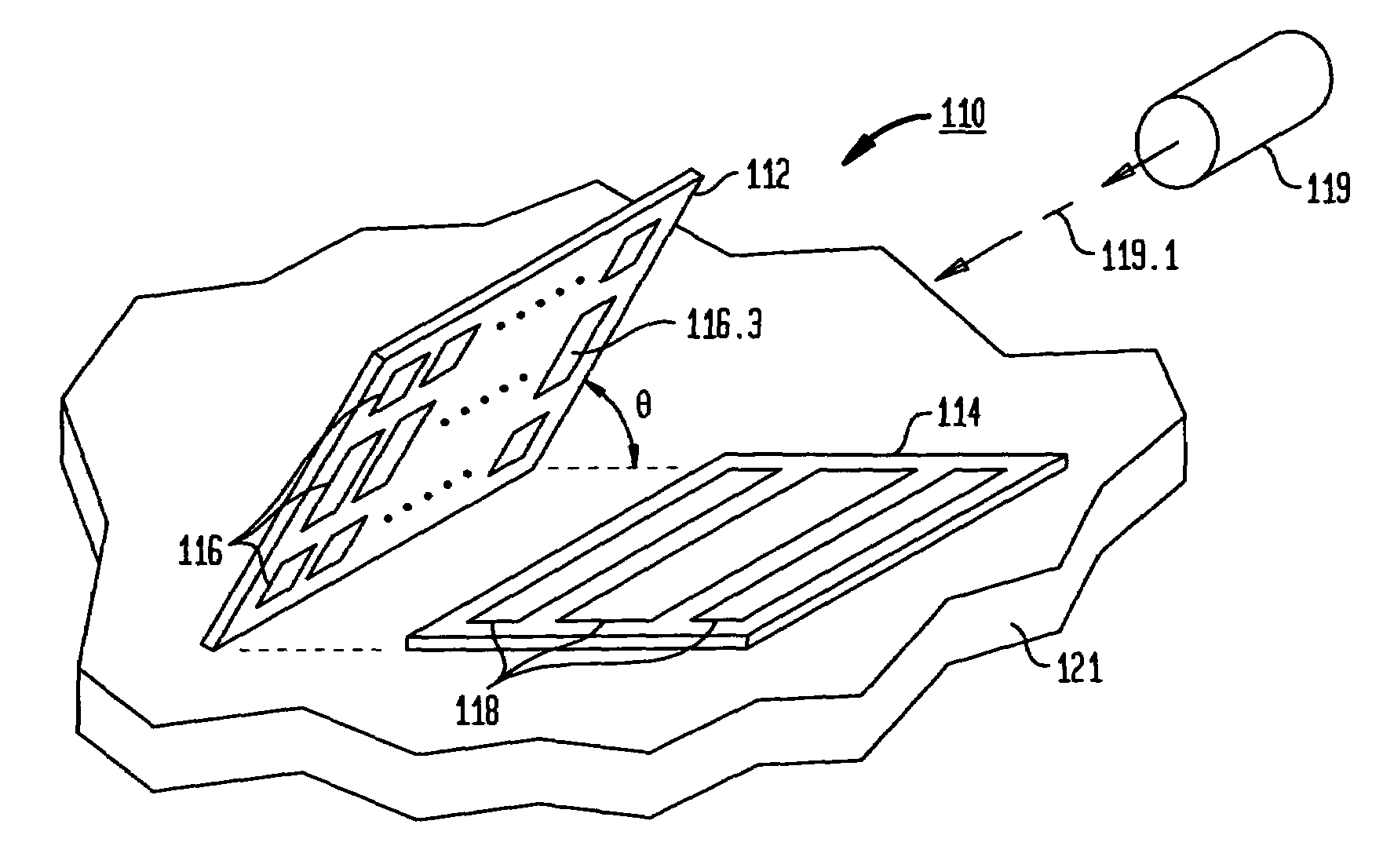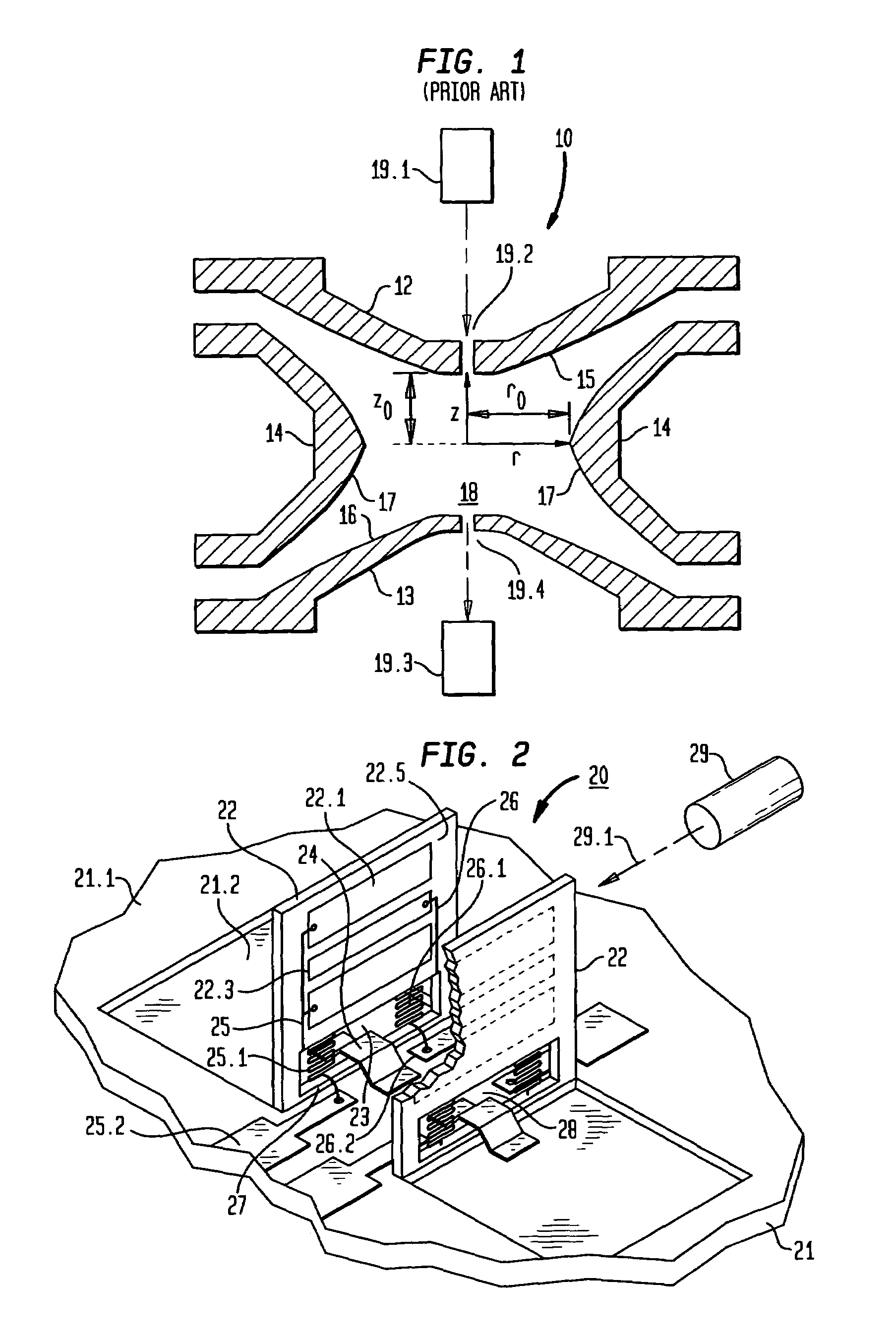Wafer supported, out-of-plane ion trap devices
a technology of ion traps and ion traps, which is applied in the direction of mass spectrometers, separation processes, stability-of-path spectrometers, etc., can solve the problems of large and bulky equipment in which the ion traps are incorporated, complex machining techniques, and high manufacturing costs
- Summary
- Abstract
- Description
- Claims
- Application Information
AI Technical Summary
Problems solved by technology
Method used
Image
Examples
Embodiment Construction
Ion Trap Structure and Operation
[0027]With reference now to the illustrative embodiment of our invention shown in FIG. 2, a micro-miniature ion trap 20 comprises at least one plate 22, which is rotateably or pivotally mounted on a major surface 21.1 of a wafer (or substrate) 21 during assembly but fixedly mounted on surface 21.1 during operation of the trap. (A pair of plates 22 is shown for purposes of illustration only.) The wafer may be made of semiconductor material, dielectric material, or a combination of both. The ability to pivot or rotate each plate results from processing techniques, which are adapted from the integrated circuit industry and will be described more fully hereinafter. Suffice it to say here that, in one embodiment, such processing results in each plate having a window or aperture 28 formed near the bottom of the electrode so as to define an elongated rail or axle 27, which extends under a hinge 24. When the plate 22 is released from its original as-fabricate...
PUM
 Login to View More
Login to View More Abstract
Description
Claims
Application Information
 Login to View More
Login to View More - R&D
- Intellectual Property
- Life Sciences
- Materials
- Tech Scout
- Unparalleled Data Quality
- Higher Quality Content
- 60% Fewer Hallucinations
Browse by: Latest US Patents, China's latest patents, Technical Efficacy Thesaurus, Application Domain, Technology Topic, Popular Technical Reports.
© 2025 PatSnap. All rights reserved.Legal|Privacy policy|Modern Slavery Act Transparency Statement|Sitemap|About US| Contact US: help@patsnap.com



